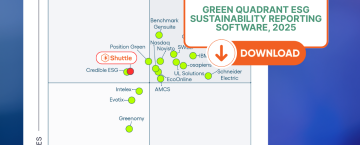GloBE Loss and tax payable - Understanding the issues and optimising compliance
Introduction
Can you be in a GloBE loss position yet still end up paying additional tax? The answer is yes – and it often comes as a surprise to many businesses.
The OECD’s Pillar 2 introduces strict rules on calculating GLoBE losses and their tax treatment.
Depending on the makeup of your deferred tax assets (DTAs), you could still owe top-up tax, even if you report an accounting loss.
In this article, Marie-Laure Navelot explains:
- Why a GloBE loss can still trigger additional tax
- How Article 52 rules impose tax on losses
- Which options are available to optimise your tax position
- How GMT Insight can help you anticipate and fine-tune your decisions
1. Why a GloBE Loss might lead to Top-Up tax
Article 52 of the GloBE rules specifies that in the event of a GloBE loss and a deferred tax asset (DTA ) exceeding 15% of this loss, an additional tax is due. A few clarifications are therefore in order:
What is a Deferred Tax Asset (DTA) under Pillar 2?
A deferred tax asset (DTA) is recognised when a business anticipates a reduction in future tax liabilities. It often arises in scenarios such as:
- Carried-forward tax losses: If a company incurs a loss now, it may offset that loss against future taxable profits.
- Temporary differences between tax and accounting standards: Certain expenses or revenues are recognised differently under local accounting rules vs. tax laws.
💡 DTA and Pillar 2: A strict rule
Under the GloBE rules for Pillar 2, all deferred taxes must be valued at a 15% rate, even if the local tax rate is higher.
This can lead to a downward revaluation of DTAs, potentially triggering a top-up tax liability if the DTA exceeds 15% of the GLoBE loss.
What is a GloBE loss?
A GloBE loss is a negative result after applying the required adjustments under the Pillar 2 rules.
Unlike standard local tax losses, a GloBE loss:
✔ Is calculated using GloBE-specific rules, rather than local tax legislation.
✔ Includes various accounting and tax adjustments to ensure international alignment.
✔ May differ significantly from the loss reported under domestic tax rules.
Why does it matter?
- If a business posts a GloBE loss, it might reasonably expect to have no tax to pay.
- However, if its DTAs exceed 15% of that GloBE loss, top-up tax can still be levied immediately.
🚨 Important: A GloBE loss remains attached to the group and does not follow a company if it is sold to another group.
2. Example with figures – practical case (see the video)
3. Two options for managing this scenario
If your DTA exceeds 15% of your GloBE loss, you have two choices:
✔ Option 1 – Pay the immediate top-up tax
- You settle the difference between your recognised DTA and the theoretical 15% threshold.
- You can reclaim this amount later when you utilise your local tax losses in the future.
✔ Option 2 – Elect the GloBE Loss (Article 451 of the GloBE rules)
- You relinquish all DTAs and replace them with a tax charge calculated at 15% of your GloBE loss.
- This may be more advantageous in certain situations, but requires careful analysis.
💡 Which option is best? It depends on your particular circumstances and your long-term tax strategy.
4. Why simulations are essential
Decisions relating to Pillar 2 and GLoBE losses vary across jurisdictions and depend on the specifics of each group.
Key points to consider include:
✔ Permanent tax differences and their impact on your tax liability
✔ The potential for carrying forward losses
✔ The consequences of entity disposals: A GloBE loss remains within the original group, even if you sell the entity.
📌 Example:
- An entity with a GloBE loss that is subsequently sold does not transfer that loss to its new group.
- Conversely, a newly acquired entity does not bring any previously incurred GloBE losses into the new group.
🚨 Caution: Getting this wrong can be costly!
5. Automate your simulations with GMT Insight
Because you need a tool that can handle this complexity, GMT Insight helps you simulate all your options.
GMT Insight offers features to:
✔ Automate the calculation of GloBE losses and deferred tax assets
✔ Analyse which option is best in each jurisdiction
✔ Anticipate the tax consequences of strategic decisions
✔ Ensure full compliance with Pillar 2 rules
Don’t leave your tax strategy to chance—use GMT Insight to manage your fiscal planning with precision.
📢 Any questions? Need clarification? Talk to us on LinkedIn, or contact us. We’re here to help!


